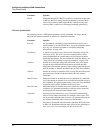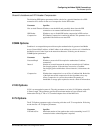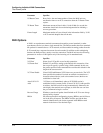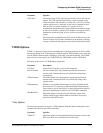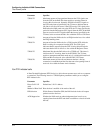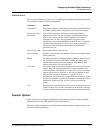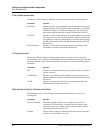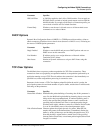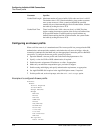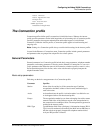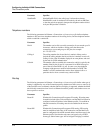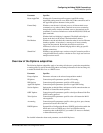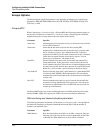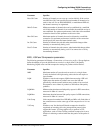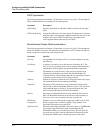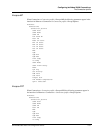
4-16 MAX 6000/3000 Network Configuration Guide
Configuring Individual WAN Connections
The Answer profile
Configuring an Answer profile
When a call first comes in, it is unauthenticated. The Answer profile lets you negotiate the PPP,
authentication, and encapsulation methods, and whether the call routes or bridges. After the
connection is authenticated, the MAX unit uses the appropriate Connection profile or RADIUS
user profile. To configure the Answer profile, proceed as follows:
1 Open the Ethernet > Answer profile and set the Profile Reqd parameter to Yes.
2 Specify a value for CLID or DNIS authentication, if required.
3 Enable dynamic assignment of IP addresses to callers, if appropriate.
4 Make sure you enable the encapsulation types you intend to support.
5 Enable routing and bridging and specify authentication requirements, as appropriate.
6 Set AppleTalk PPP dial-in options in the AppleTalk Options menu, if required.
7 Exit the profile and, at the exit prompt, select the exit and accept option.
Example of a configured Answer profile
Ethernet
Answer
Profile Reqd=Yes
Id Auth=None
Assign Adrs=No
Encaps
MPP=Yes
MP=Yes
PPP=Yes
COMB=Yes
FR=Yes
X25/PAD=Yes
EU-RAW=Yes
EU-UI=Yes
V.120=Yes
X.75=Yes
TCP-Clear=Yes
ARA=Yes
PPP Options
Route IP=Yes
Packet Flush Length Maximum number of bytes to buffer. Valid values are from 1 to 8192.
The default value is 256. (Note that buffering large packets consumes
more system resources.) If the system has buffered the specified
number of bytes without matching the End of Packet Pattern, it flushes
the buffer by writing the data to TCP.
Packet Flush Time Timer in milliseconds. Valid values are from 1 to 1000. The timer
begins counting down upon reception of the first byte of buffered data.
If the specified number of milliseconds has elapsed without any
buffered data matching the End of Packet Pattern, the system flushes
the buffer by writing the data to TCP.
Parameter Specifies



